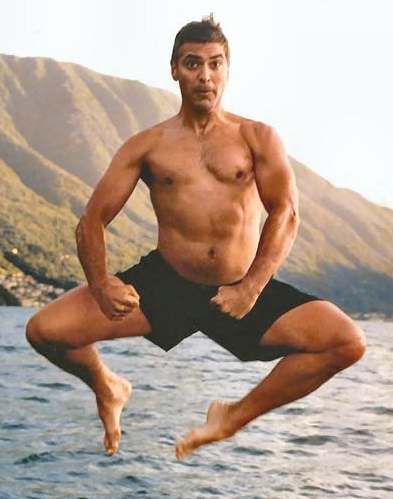Friday, September 11, 2009
World's Most Expensive Spices
Thursday, June 18, 2009
World's Deadliest Virus

HIV/AIDS, the Global Tragedy HIV, the virus that causes AIDS

AIDS is a pandemic—a disease outbreak that is happening all over the world. In 2000 alone, 3,000,000 people died of AIDS. Since the AIDS pandemic began around 1985, almost 22,000,000 people have died from the disease. Right now, HIV infects more than 36,000,000 people across the world, so that death toll will definitely get a lot bigger over the next several years. HIV doesn’t kill people itself. Instead, the virus shuts down a person’s immune defenses—the tools used to fight off invading germs—by infecting and destroying important immune cells called T cells.
Once a person loses too many T cells, his or her body can no longer deal with other microbes that cause infections. HIV merely opens the floodgates. Eventually HIV-infected people become overrun by germs and die of lung infections, skin infections or other diseases. We now have several drugs that fight HIV. They cannot cure the infection, but they can keep it in check. Unfortunately, victims of HIV have to take several of these drugs every day for life and the drugs are very expensive. In Africa and other developing parts of the world where HIV is spreading most rapidly, most people don’t have enough money to buy these drugs. That’s why we can expect the death toll from HIV/AIDS to get a lot bigger over the next several years. Nature sure has created some tiny monsters when it comes to microbes—bugs that make us throw up, ooze pus, bleed out of our eyes and cough up blood. But which take top honors (or dishonors) for being the most lethal of all?
The Flu Virus—
Even Deadlier than HIV? Influenza A viruses, one of the several types of flu viruses

Oh come on now, I’m sure you’re saying. The flu virus here in a list of the most lethal microbes? Sure, every year during what’s called "the flu season" tens of thousands of people get the flu. Despite feeling all achy and lousy for several days, most people eventually beat the virus and recover just fine. But that’s not how it went during the 1918 flu season. That year, World War I was raging so the effects of the flu virus sort of got overshadowed by the bigger, more obvious effects of bullets and bombs. However, in 1918 the flu virus killed at least 675,000 American people. Worldwide, it killed at least 21,000,000 people. These are low estimates. Some research now suggests that the flu may have killed 40,000,000 to 50,000,000 people around the world that year. Researchers still aren’t sure why the 1918 flu virus was so deadly.
Victims of the flu that year died in a gruesome way, the virus causing so much fluid to build up in their lungs so rapidly that it was like drowning. If higher estimates of how many people died from the 1918 flu are true, then the 1918 flu is the deadliest microbe ever in a single year. Thank goodness we haven’t seen a flu bug that deadly again—but will we someday?
The Plague

The 1918 flu virus and HIV are the biggest killers of modern times. But back in the 14th century, the bacterium that causes bubonic plague, or the Black Death as it was also known, was the baddest bug of all.
In just a few years, from 1347 to 1351, the plague killed off about 75,000,000 people worldwide, including one-third of the entire population of Europe at that time. It spread through Asia, Italy, North Africa, Spain, Normandy, Switzerland, and eastward into Hungary. After a brief break, it crossed into England, Scotland, and then to Norway, Sweden, Denmark, Iceland and Greenland. Yersinia pestis, the plague bacteria
Courtesy of Neal Chamberlain The plague bacterium is called Yersinia pestis. There are two main forms of the disease. In the bubonic
Ebola, the Bloody Virus

Ebola virus Courtesy of CDC Ebola is definitely a nasty killer. It is part of a group of viruses that, among other effects on the body, cause the blood to stop clotting. Victims begin oozing blood from their mouths, noses, internal organs, even their eyes. It kills up to almost 90% of those who get infected.
With that kind of death rate, Ebola would be the deadliest microbe of all if it was more common. Fortunately, infections by this virus are pretty rare. There have only been seven outbreaks in humans. It has killed just over 800 people since the first outbreak in the Democratic Republic of the Congo (formerly called Zaire) in 1976. While outbreaks of this virus are rare and relatively small, Ebola is still one mean microbe that I wouldn’t ever want to tangle with.
--
Thursday, May 14, 2009
10 Worst Countries to be a Blogger

CPJ issued its report to mark World Press Freedom Day, May 3, and to call attention to online repression, a great emerging threat to press freedom worldwide. CPJ considers bloggers whose work is reportorial or fact-based commentary to be journalists. In 2008, CPJ found, bloggers and other online journalists were the single largest professional group in prison, overtaking print and broadcast journalists for the first time.

Egypt a country where more than 100 bloggers were detained last year alone.

Authorities block only a small number of Web sites, but they monitor Internet activity on a regular basis. Traffic from all Internet service providers passes through the state-run Egypt Telecom. Authorities regularly detain critical bloggers for open-ended periods. Local press freedom groups documented the detention of more than 100 bloggers in 2008 alone. Although most bloggers were released after short periods, some were held for months and many were kept without judicial order. Most detained bloggers report mistreatment, and a number have been tortured.
Lowlight: Blogger Abdel Karim Suleiman, known online as Karim Amer, is serving a four-year prison term on charges of insulting Islam and Egyptian President Hosni Mubarak.
9.

Turkmenistan, where the nation's first internet cafe was guarded by troops.
President Gurbanguly Berdymukhammedov promised to open his isolated country to the world by providing public Internet access. But when the country’s first Internet café opened in 2007, it was guarded by soldiers, connections were uneven, the hourly fee was prohibitively high, and authorities monitored or blocked access to certain sites. The Russian telecommunications company MTS, which entered the Turkmen market in 2005, started offering Web access from mobile phones in June 2008, but service agreements require customers to avoid Web sites critical of the Turkmen government.
Lowlight: Turkmentelecom, the state Internet service provider, routinely blocks access to dissident and opposition sites, while it monitors e-mail accounts registered with Gmail, Yahoo, and Hotmail.
8.
With nearly 300 million people online—more than any other country in the world—
Lowlight: In 2008, the National Office for Cleaning Up Pornography and Fighting Illegal Publications announced that it had removed more than 200 million “harmful” online items during the prior year.
7.
Internet service providers are required to submit IP addresses and other identifying information to the government on a regular basis. All Internet traffic flows through a central network, allowing the government to filter content and monitor e-mails. The government employs an array of techniques to harass bloggers: conducting surveillance, restricting bloggers’ movements, and undertaking electronic sabotage. Online writers Slim Boukhdhir and Mohamed Abbou have served jail time for their work.
Lowlight: In a March address, President Zine El Abidine Ben Ali warned writers against examining government “mistakes and violations,” saying it was “an activity that is unbecoming of our society and is not an expression of freedom or democracy.”
6.
Bloggers have daringly tried to fill the gap in independent news that is left by the traditional state-controlled media. The government has responded with more regulation. Authorities have called on international technology companies such as Yahoo, Google, and Microsoft to provide information about bloggers who use their platforms. Last September, prominent blogger Nguyen Van Hai, also known as Dieu Cay, was sentenced to 30 months in prison on tax evasion charges. CPJ research shows the charges were in reprisal for his blogging.
Lowlight: In October 2008, the Ministry of Information and Communication created a new agency tasked with monitoring the Internet.
5.
Saudi Arabia, a country where an estimated 400,00 sites are blocked.
An estimated 400,000 sites are blocked inside the kingdom, including those that tackle political, social, or religious issues. Self-censorship is widespread. Aside from “indecent” material,
Lowlight: Blogger Fouad Ahmed al-Farhan was jailed without charge for several months in 2007 and 2008 for promoting reform and the release of political prisoners.
4.
Cuba, where 21 bloggers are in jail.

Only government officials and people with links to the Communist Party have Web access. The general population goes online at hotels or government-controlled Internet cafés by means of expensive voucher cards. A small number of independent bloggers such as Yoani Sánchez detail everyday life and offer criticism of the regime. Their blogs are hosted outside the country and are largely blocked on the island. Two independent bloggers tell CPJ that they are harassed by authorities. Only pro-government bloggers can post their material on domestic sites that can be easily accessed.
Lowlight: The government now jails 21 writers who were on the leading edge of online journalism in the early part of the decade. These writers, all but one of whom was jailed in 2003, phoned or faxed their material to overseas Web sites for posting.
3.
The government uses filtering methods to block politically sensitive sites. Authorities detain bloggers for posting content, even third-party material, deemed to be “false” or detrimental to “national unity.” Self-censorship is pervasive. In 2008, the Ministry of Communications ordered Internet café owners to get identification from all patrons, to record customer names and times of use, and to submit the documentation regularly to authorities. Human rights groups noted that authorities harass and detain bloggers perceived as antigovernment.
Lowlight: Waed al-Mhana, an advocate for endangered archaeological sites, is on trial for a posting that criticized the demolition of a market in Old Damascus.
2.
Iran, a country where a young blogger died in prison last month, was named as the second-worst country.
Authorities regularly detain or harass bloggers who write critically about religious or political figures, the Islamic revolution, and its symbols. The government requires all bloggers to register their Web sites with the Ministry of Art and Culture. Government officials claim to have blocked millions of Web sites, according to news reports. A newly created special prosecutor’s office specializes in Internet issues and works directly with intelligence services. Pending legislation would make the creation of blogs promoting “corruption, prostitution, and apostasy” punishable by death.
Lowlight: Blogger Omidreza Mirsayafi, jailed for insulting the country’s religious leaders, died in Evin Prison in March under circumstances that have not been fully explained.
1.
Burma has been judged the worst country in the world for online restrictions in a report looking at the repression faced by bloggers.
Bloggers inside Burma proved invaluable in passing out information during the September 2007 uprisings, leading to the ruling military junta blocking the Internet completely for a period, reports The Guardian.

Lowlight: Blogger Maung Thura, popularly known as Zarganar, is serving a 59-year prison term for disseminating video footage after Cyclone Nargis in 2008.
--
Tuesday, May 12, 2009
Largest Sea Creatures Ever Caught
This Grizzly bear sized catfish measures in at nearly 9 feet long. This might just be the largest freshwater fish ever on record.
Thai villagers tried to keep the giant catfish alive, but despite great efforts, it died and was eaten by the villagers. This species of catfish is listed as "critacally endangered" by the IUCN (World Conservative Union). This catfish specimen was caught in the Chiang Khong district, and is the biggest one caught since 1981. Due to the nature of this rare catch, the World Wildlife Fund is teaming up with the National Geographic Society to study the planet earth's largest freshwater fish.

2. Largest Stingray Ever Caught - Thailand
This gigantic freshwater Stingray weighed in at over 256kg. A team of fishermen fought hard to reel this guy in, after fishing up other stingrays of varied weight, from different parts of a Thai river. It took them 90 minutes to wrangle this beast out of the water, to be finally brought to the side of the boat. This guy was crowned the largest freshwater fish to ever be caught on rod and line.

3. Largest Salmon Ever Caught - California
A Chinook salmon in lower Battle Creek was found to be 51 inches long, which could have weighed more than 88 pounds, according to standard size-to-weight ratios. Normally, salmon weigh between 20 and 30 pounds. This gigantic salmon was found during a standard fall salmon survey by some DFG biologists.

The crew of a fishing steamer were fishing, and pulled up and Eel weighing in at 34lbs, 5 feet 3 inches, and a circumference of 15 inches. Thrashing around in the net, this big Eel was not as feisty as smaller ones, which would have made things pretty interesting.


Typically, sharks are caught on rod and reel, some in nets. The whale shark is known to be the largest member of the shark family, and also known for their friendly nature and eating only small oceanic organisms. Reports surfaced of a 23 foot long whale shark caught in the Mediterranean, but the actual length was 21 feet.

Crabs are odd looking creatures, usually sized to fit on your dinner plate. However; the largest crab ever to be caught weighed somewhere around 15kg and was almost 2 meters, tip to tip. A Varanger king crab is the largest crab species in the world, and is often referred to as the "red king crab".

In February 2007, a fishing boat off the coast of Antarctica caught a giant squid. Measuring up at 26 feet long, believed to be the biggest squid captured, ever. Scientists froze the big squid, and now it lives in a New Zealand museum. This collossal squid could keep growing - up to 46 feet long! Due to the nature of these deep-sea squid, these are very rarely seen specimen.

Here we've got a legendary Pacific blue marlin, weighing in at 1,656 pounds, caught in 1984. This 17 foot marlin is the largest to ever have been caught in Kona, Hawaii, but only the second largest to have been caught by rod and reel. For two hours and 20 minutes, fishermen struggled to reel the beast in.

The Largest Barracuda in the world was caught off Chrismas Island, in the Indian Ocean, on April 11, 1992. A barracuda often appears in open seas, and are deadly predators that usually ambush their prey. With a burst of speed, they can easily overrun their prey. The largest barracuda caught was 85 pounds. That's one heavy fish!

--
Monday, May 11, 2009
World's Happiest Place

The report's author, Adrian White, said the results showed that people in the West should realise how lucky they were. "The current obsession in the West about how unhappy we are really needs a reality check," he said. "I think one of the most destructive myths is that people in intense poverty are actually happy. Because if you believe that, why should you do anything?" Most of Africa and the former Soviet republics scored worst. Burundi, Zimbabwe and the Democratic Republic of Congo were the world's least happy places. The report did, however, contain some surprises. The tiny Himalayan nation of Bhutan, ruled by an autocratic monarch, came eighth, while nations such as Japan and France languished at 90th and 62nd respectively. Benjamin Holst, a Danish journalist, said that Denmark's high suicide rate - the second worst in Europe - and a recent rise in xenophobia should make people question just how content Danes were. "I'm not sure about these studies and I really wonder about the suicide rates in Denmark," he said. "I mean is it that we're so happy we kill ourselves? I really wonder about that."
On top of the world
* 1 Denmark
* 2 Switzerland
* 3 Austria
* 4 Iceland
* 5 Bahamas
* 6 Finland
* 7 Sweden
* 8 Bhutan
* 9 Brunei
* 10 Canada
Article Source: The Independent World
--
Monday, May 4, 2009
Hatton apologises to supporters
 Ricky Hatton has apologised to his army of fans in the wake of his devastating IBO light-welterweight world title defeat against Manny Pacquiao.Hatton is considering his future after suffering a punishing second-round knockout in Las Vegas that left the 30-year-old Briton requiring a brain scan.
Ricky Hatton has apologised to his army of fans in the wake of his devastating IBO light-welterweight world title defeat against Manny Pacquiao.Hatton is considering his future after suffering a punishing second-round knockout in Las Vegas that left the 30-year-old Briton requiring a brain scan."I'm so desperately sorry for you all," Hatton told his followers. "I thought I would win but it went wrong.
"I'm OK but so upset for all the supporters who came out here."
About 20,000 fans are thought to have made the trip from Britain to see Hatton fight.But they witnessed less than six minutes of action as Hatton suffered only the second loss of his 47-fight career.
The Mancunian was knocked down twice in the first round before being counted out with one second left of round two after being floored by a huge left from his Filipino opponent.
"I didn't see the punch coming, but it was a great shot," said Hatton. "I congratulate Manny. He is a terrific fighter."
Despite the manner of his defeat, Hatton was able to host a poolside party at the MGM Grand Hotel on Sunday, appearing relaxed and unmarked.
He posed for pictures with his younger brother Matthew, who won his welterweight fight on the undercard.
Meanwhile, the Hatton camp moved to play down talk of a rift between American trainer Floyd Mayweather Sr and English assistant trainer Lee Beard, which was raised as a possible contributory factor to the defeat.
"It's an interesting point, but the one person to blame is Pacquiao," said Hatton Promotions chief executive Gareth Williams.
Mayweather Sr appeared at the post-fight press conference but only briefly, and he did not sit on the chairs and take questions alongside Beard and Williams.
"Lee's a lot more involved with Ricky Hatton than Floyd Mayweather is," Williams added. "Floyd Mayweather was brought in for 12 weeks to do a job, and that's the end of it.
"He's finished now and we don't know what's going to happen. Lee Beard's with Hatton Promotions 365 days a year, Floyd Mayweather's there for 12 weeks before a fight, and that's the difference.
"Probably the best way to describe Floyd is that he's on board as a consultant. He doesn't control Ricky Hatton, he doesn't speak for Ricky Hatton, he speaks for Floyd Mayweather."
--
Wednesday, April 29, 2009
Celebrity Potheads

 You already know that Willie Nelson loves the green, and you’re probably not surprised to hear Jack Black is a toker.
You already know that Willie Nelson loves the green, and you’re probably not surprised to hear Jack Black is a toker.Hell, you probably even remember when sweet Mary Ann from Gilligan’s Island got popped for marijuana possession recently. But you might not be aware of these celebrities who like to partake from time to time.
Here are a list of some celebrity potheads that might surprise you.
Kirsten Dunst- Just last year, Kirsten Dunst admitted she likes smoking marijuana. In fact, she said “America’s view on weed is ridiculous” and the world would be a better place if “everyone smoked weed.” No wonder she likes playing the role of Mary Jane in Spiderman. Okay, that’s a lame joke, but I couldn’t resist.
Brad Pitt- Whether on the set of Ocean’s Twelve or Thelma & Louise, one thing is clear: Brad Pitt likes to unwind after a long day of shooting with a little help from his green friend. Beyond the reports of on-set smoking, Pitt’s also been spotted on numerous occasions with T-shirts professing his love for weed.
Jennifer Aniston- This stunning actress has admitted her love for weed on several occasions. Back when she was still married to Brad Pitt, she confessed that she and Pitt used to smoke together on a regular basis. However, Aniston did make sure to point out that she smokes in moderation.
Harrison Ford- Harrison Ford has Bill Maher to thank for making this list. At a NORML conference, Maher told attendees it was high time Harrison Ford took a step out of the cannabis closet. I knew Indiana Jones had to be under the influence when he would pull off all those crazy stunts.
Morgan Freeman- In an interview with the UK newspaper The Guardian, this legendary actor told reporters he had given up his use of hard drugs, but that he would never quit his relationship with Mary Jane. In fact, he referred to marijuana as “God’s own weed.”
Justin Timberlake- Boy bander Justin Timberlake once said marijuana should be legalized. He told fellow star Nelly that it would cut the crime rate in half. According to Nelly, he and Timberlake love partying together, and they share a love for the green. So, that’s how Justin Timberlake could tolerate being in N-Sync for so long.
George Clooney- When shooting Ocean’s Twelve, the cast went on location to Amsterdam. The owner of a local cannabis café told reporters George Clooney was no stranger there. Apparently, the charming actor visits the store at least a few times a year. It makes sense if you think about it. Clooney is always calm and even-tempered.
and here are some of the list too...
Pot is hot in Hollywood...
Steve-O
Kevin Federline
Lindsay Lohan
Kelly Clarkson
Paris - Paris - Paris
The Laguna Beach kids
Arnold Schwarzenhuffer
Jesse Metcalfe
Goldie Hawn
Redman
Captain Kirk?!
Aaron Carter, Jennifer Aniston, Charlize Theron, Matthew McConaughey, Woody Harrelson and more!
See more from this list: FAMOUS CELEBRITY POTHEADS
--
Saturday, April 25, 2009
Top 10 Most Succesful Marijuana Users

An unemployed porno addict, sitting in his parents’ basement, playing video games, eating Lucky Charms out of the box with one hand while he lazily scratches his balls with the other. A dread-lock having, patchouli oil smelling, tie-die wearing, Phish listening, hula-hoop twirling space cadet. A burger flipping, acne having, socially inept, friendless loser… These are the common stereotypes associated with the term ‘pothead’. In a recent piece we published on pot farms, a debate erupted in the comments section, with some arguing that if you smoke pot, you’ll be poor, gay, and “washing dishes until you’re dead.”
Where these stereotypes originated remains a mystery to us. In reality, they couldn’t be further from the truth. Not only have 42% of Americans admitted to trying pot, but pot smokers have gone on to become some of the most successful people in our society. We’re not talking about Willie Nelson and Snoop. These guys are on the Forbes 500, they’re leading the free world, and they prove that all existing pothead stereotypes are nothing more than myths.
While the ‘Sir’ in front of this guy’s name puts him in some very elite company, it doesn’t automatically get him on this list. What does earn him a spot is the fact that he’s the 236th richest person in the world, founder of the Virgin empire, which encompasses everything from airlines to record stores to cell phones, and made his entire multi-billion dollar fortune from absolutely nothing. Not only does this man smoke weed, he gets high with his 21-year-old son. He has publicly stated that there’s nothing wrong with smoking pot, has petitioned for the legalization of pot, and even said that if it were legal, he’d sell it.


In fairness to tokers around the world, Sorkin is a bit more of a ‘drug addict’ than he is ‘pothead’. He started dabbling with weed and coke back in the late ’80s, has been in and out of rehab numerous times, and was arrested for possession of marijuana, mushrooms and crack in 2001. So yeah, he loves to smoke weed… but he also loves to freebase. Not cool, Aaron! However, the man’s drug problems have done little to hinder his success in Hollywood. His work on The West Wing, both as writer and producer, earned him multiple Emmy Awards, and countless nominations for other awards.







--













